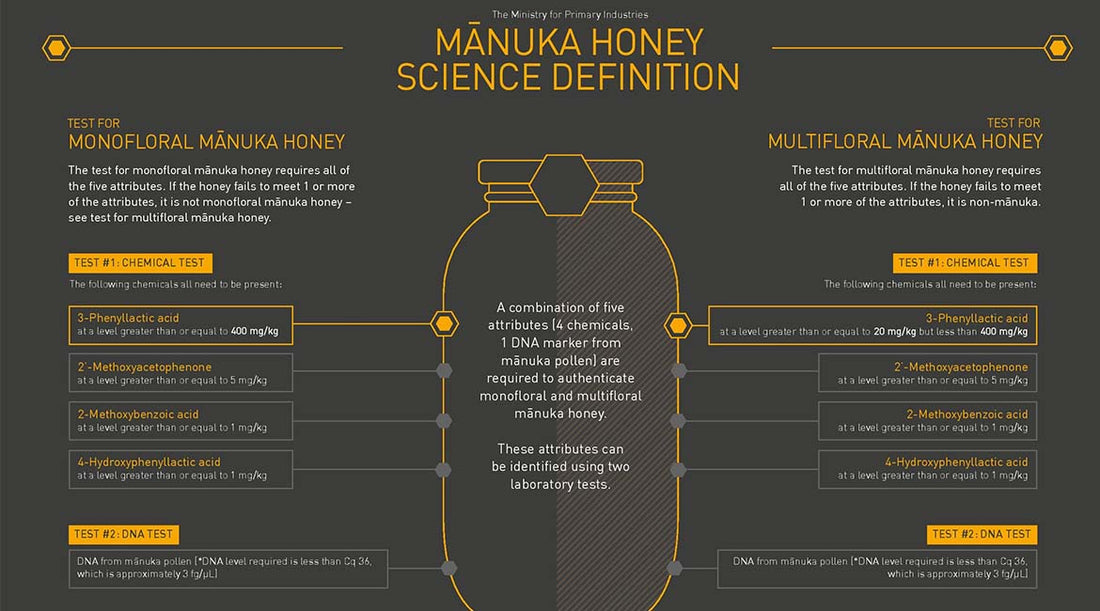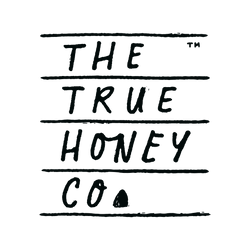
This month New Zealand’s Ministry for Primary Industries released its finalised GREX (General Export requirements for Bee products). Included in this was the much talked about ‘scientific definition of Mānuka honey’. This definition relates to lab tests that will now be done on NZ packed honey that show four chemical markers from nectar and a DNA marker from Mānuka pollen.
The results of these particular lab tests will categorise the honey that The True Honey Co. and other New Zealand honey producers make.
The four chemical and one DNA marker separate Mānuka honey from other honeys and define the differences between Monofloral Mānuka honey (honey made by bees foraging on mainly Mānuka flowers) and Multifloral Mānuka honey (produced by bees feeding on a higher amount of other flowering plants). Based on the levels of these markers, we’re thrilled to report that all The True Honey Co. Mānuka honey can be classified by MPI as Monofloral Mānuka honey. This is good news for our honey lovers in the UK, Australia, Japan and in other new and growing markets around the world.
Ready for a short chemistry lesson? We promise you won’t be tested (unlike the honey).
The five markers that need to be present to qualify as Monofloral Mānuka honey:
- 3-Phenyllactic acid – at least 400mg per kg
- 2’-Methoxyacetophenone – at least 5mg per kg
- 2-Methoxybenzoic acid – at least 1mg per kg
- 4-Hydroxyphenyllactic acid – at least 1mg per kg
- DNA from Mānuka pollen (level required < Cq 36, approx. 3 fg/µL)
The definition comes after a three-year scientific programme with extensive industry and public consultation. MPI took feedback from its consultation on board – including a submission from The True Honey Co. After reviewing all submissions, MPI amended the definition as well as some other parts of the new export requirements. These changes are designed to improve traceability and prevent contamination with lower grade honeys or other substances. Because no one wants ‘other substances’ in their Mānuka honey.
In the revised definition, levels of 2’-methoxyacetophenone rose from 1 mg/kg to 5 mg/kg. This will help prevent the blending of other honey with Mānuka honey to meet the Monofloral classification.
Other changes to the new GREX included better traceability of beehive boxes for beekeepers and a better system for recording what happens between operators and exporters. All of these changes combine with the lab tests to help global honey lovers know they’re getting exactly what it says on the jar.
MPI is confident its definition is “based on robust and accurate science” and the changes will assure worldwide markets of the authenticity of New Zealand Mānuka honey. The Ministry is looking into ways to apply it within New Zealand too.
From February 2018, Mānuka honey for export will be tested to ensure it meets the MPI definition. We welcome this move, as we’ve always had our honey independently tested by Analytica Laboratories – MPI accredited to test for both the chemical and DNA markers – to make sure it’s at least as good as we say it is (it’s often better). And we hope this will give honey lovers more confidence in legit Mānuka honey producers as a whole.
Come back next month for our insiders checklist to help you avoid buying fake Mānuka honey.

